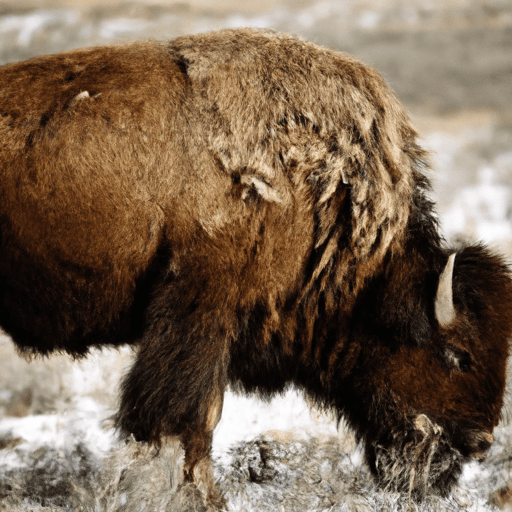Exploring the Rich Flavors of Buffalo: A Culinary Adventure
When it comes to exotic and unique meats, there’s one that stands out from the herd with its bold flavor and fascinating history – buffalo. Whether you’re a dedicated foodie or simply curious about expanding your culinary horizons, this versatile ingredient will captivate your taste buds and leave you wanting more. In this blog post, we’ll delve into the tantalizing taste of buffalo, its common uses in cooking, its nutritional value, and some interesting historical facts.
Taste Sensations: Bold, Yet Subtle
Buffalo meat, often referred to as bison, offers a wonderfully distinctive taste that combines the richness of beef with a hint of sweetness. It has a robust, savory flavor that is slightly milder and sweeter than beef, making it a delightful alternative for those seeking a unique gastronomic experience. The meat is succulent, tender, and cooks beautifully, making it ideal for a wide range of dishes.
Exploring Culinary Applications
Buffalo meat’s versatility in the kitchen knows no bounds, making it an excellent choice for both traditional and contemporary cuisine. From hearty stews to succulent steaks, here are some common uses of buffalo in cooking:
- Burgers and Meatballs: Buffalo meat creates mouthwatering burgers and meatballs that are juicy, flavorful, and lower in fat compared to traditional beef options.
- Roasts and Steaks: Thanks to its tenderness, buffalo is an exceptional choice for roasts and steaks. A perfectly cooked buffalo roast, rubbed with aromatic herbs and spices, will become the star of any dinner table.
- Stir-Fries and Tacos: For a quick and healthy meal, buffalo meat performs brilliantly in stir-fries and tacos. Its unique flavor adds depth and complexity to these dishes, ensuring a memorable dining experience.
- Sausages and Jerky: Buffalo meat’s lean yet succulent nature is perfect for making gourmet sausages and tantalizing jerky snacks.
Nutritional Benefits: Lean and Wholesome
Aside from its delectable taste, buffalo meat offers several nutritional benefits. Here are some highlights:
- Lean Protein: Buffalo is a lean meat, making it an excellent source of high-quality protein.
- Lower in Fat: Compared to beef, buffalo meat is lower in fat, which makes it an attractive option for those watching their fat intake.
- Rich in Essential Nutrients: Buffalo meat is packed with essential nutrients like iron, zinc, and vitamin B12.
- Omega-3 Fatty Acids: Raising buffalo on grass results in meat rich in Omega-3 fatty acids, which are beneficial for heart health.
Fascinating History: From Plains to Plate
Buffalo have long roamed the Great Plains of North America and have been an integral part of indigenous cultures for centuries. These majestic animals are deeply intertwined with the history of the land and its people. Their meat sustained native tribes and provided a vital source of sustenance for indigenous communities. The buffalo’s resilience and strength were hailed as symbols of power and spirituality.
During the 19th century, the vast buffalo herds were nearly decimated due to overhunting and westward expansion. However, thanks to conservation efforts, buffalo populations have since rebounded. Today, enjoying buffalo meat contributes to the preservation of a species that holds significant historical and cultural importance.
Conclusion
Exploring the world of buffalo is not just about savoring a unique culinary experience; it’s also about embracing the rich history and culture surrounding these majestic animals. From its bold flavor to its versatility in the kitchen, buffalo meat offers a remarkable journey through taste and time. So, why not embark on your own culinary adventure and experience the wonder of buffalo?
Buffalo
Origin: The buffalo, also known as the American bison (Bison bison), is native to North America. It played a crucial role in the lives of indigenous peoples who depended on it for food, clothing, and shelter.
Common Uses: Buffalo meat is a popular alternative to beef. It is leaner and has a slightly sweeter and richer flavor. Buffalo is commonly used in a variety of dishes, including burgers, steaks, sausages, and stews.
Nutritional Benefits: Buffalo meat is a good source of high-quality protein, iron, and zinc. Compared to beef, it tends to be lower in fat and cholesterol while providing similar levels of essential nutrients. Buffalo meat is also rich in omega-3 fatty acids, which have been associated with various health benefits.
Unique Properties: Unlike domestic cattle, buffalo are known for their resilience and ability to withstand harsh environments. They have a strong muscular frame, a large hump on their shoulders, and short, curved horns. The coat of the buffalo consists of a dense underfur and a longer outer layer of guard hairs.
Historical Significance: Buffalo were once a dominant species on the North American plains, with an estimated population ranging from 30 to 60 million. However, widespread hunting during the 19th century nearly led to their extinction. Efforts to protect and restore buffalo populations have since been successful, and they are now considered a symbol of wildlife conservation and an important part of North American history.




Use the share button below if you liked it.
It makes me smile, when I see it.